These Oliebollen are Perfect for Celebrating the Holidays!
For a taste of a classic New Year’s treat, Dutch oliebollen are for you! Literally called “oil balls” in English, these yeasty Dutch doughnuts are perfectly fried and coated in powdered sugar!
Oliebollen are eaten around and during New Year’s Eve. They are known to be a celebratory sweet treat. You will find stands selling these only in the month of December!
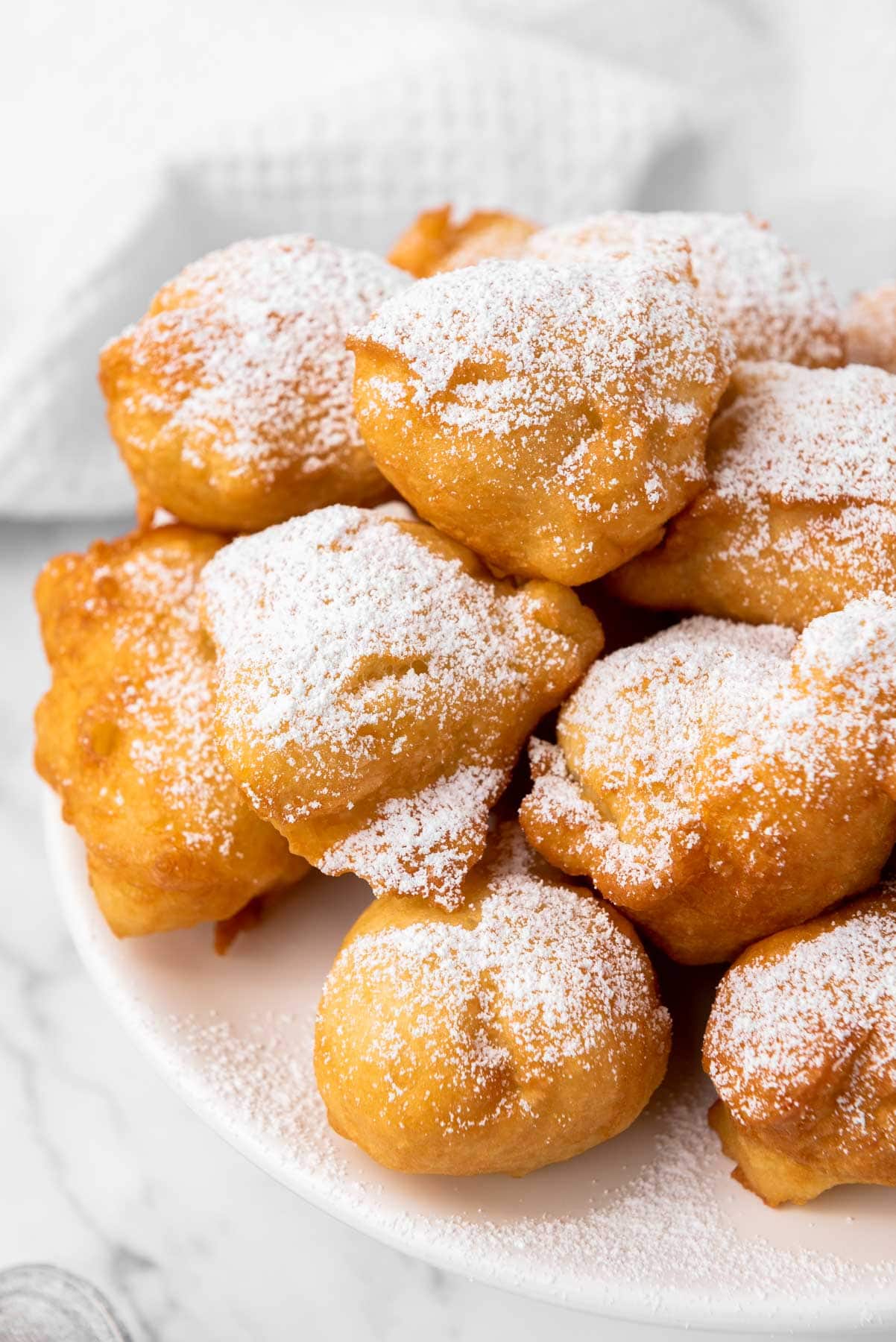
There are a few other European regional names and differences when it comes to oliebollen – and you might even know them as Dutchies!
Fun fact: Dutch immigrants are credited with bringing them to the Americas. In fact, it’s said that today’s donut (with the hole in the middle) is a direct descendent of oliebollen!
Ingredients
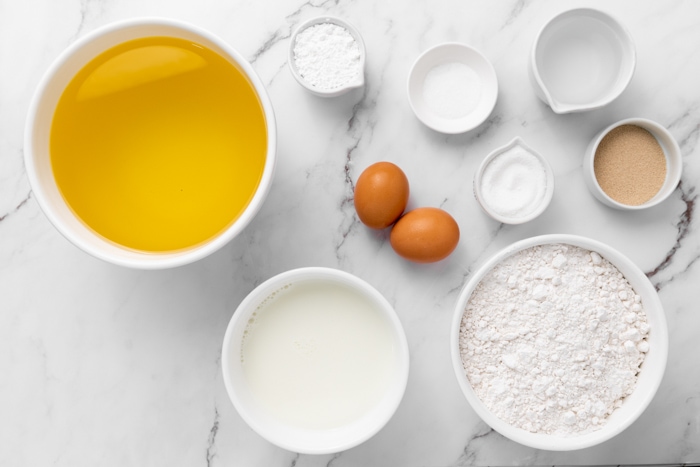
For this classic oliebollen recipe, you’ll need:
- All-purpose flour – 4 cups to make the dough.
- Milk – Should be warm (110 degrees Fahrenheit) since you’re working with yeast.
- Eggs – The eggs should have room temperature.
- Water – Should be warm as well (110 degrees Fahrenheit) due to the yeast.
- Granulated sugar – To proof the yeast and add some sweetness.
- Yeast – Use instant yeast and make sure that it hasn’t expired yet.
- Vegetable oil – Alternatively you can also use sunflower oil or canola oil.
- Powdered sugar – Also known as icing sugar or confectioner’s sugar.
Recipe Tips
Before you tackle these delicious oliebollen, be sure to read through these recipe tips. That way, you have an idea of what to keep an eye out while you’re baking.
- Make sure that the water and milk have the correct temperature since you’re working with yeast. They should be slightly warm, ideally 110 degrees Fahrenheit.
- If your yeast doesn’t bubble up and double in size, your yeast isn’t active anymore. This recipe won’t work with expired yeast.
- The dough will rest for a total of 4 hours – be patient, it’s worth it. If you can’t wait that long, check the dough one hour into the second resting period. If it has noticeably increased in size and appears airy, you might be able to fry it then.
- The dough is very wet – that’s fine. You didn’t do anything wrong.
- If you let your scooping spoons rest in a small bowl with oil, you have an easier time forming the dough balls and letting them slide in the oil.
- Also, make sure the oil is up to temperature (350 degrees Fahrenheit) before sliding in your first dough ball.
- These oliebollen are plain but you can add things like chopped apples, raisins, sultanas, currants, and even candied peel to the dough. Add it before letting the dough rise for the first time.
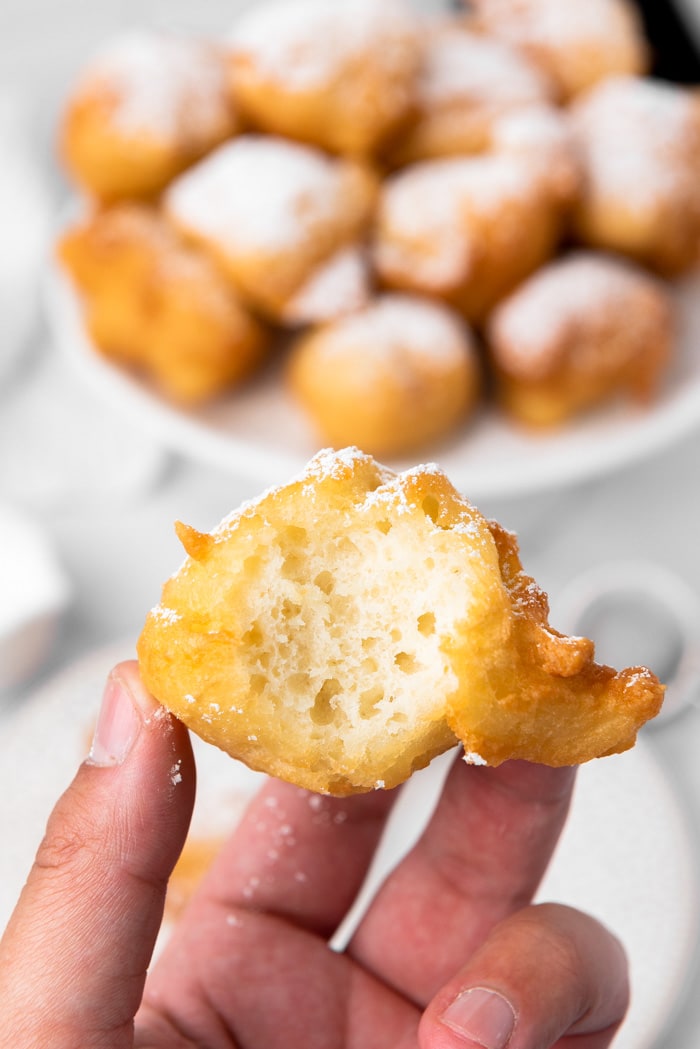
How to Make Oliebollen – Step by Step Instructions
Here’s our take on a traditional Dutch oliebollen recipe. You can follow the recipe process photos below if you have any questions.
This way, you can see just how these oliebollen were made at each step of the way!
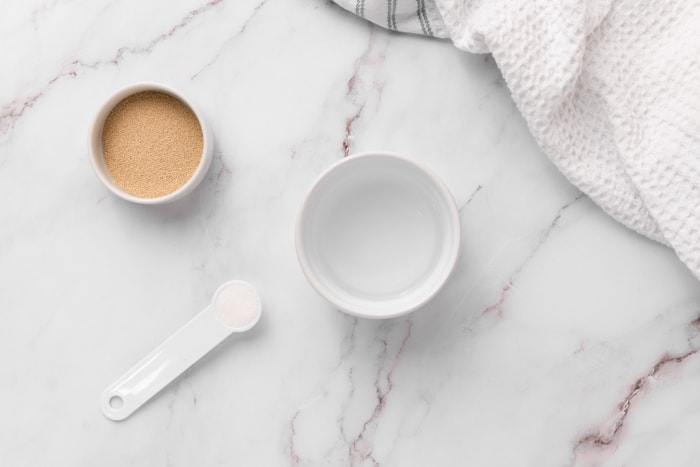
First, we’ll proof the yeast. To do this, add the warm water and 1/2 teaspoon of sugar to a small bowl. Mix until the sugar has dissolved.
Make sure the water has a temperature of around 110 degrees Fahrenheit since you’re working with yeast.
If it’s too hot, it can prevent the yeast from doing their job.
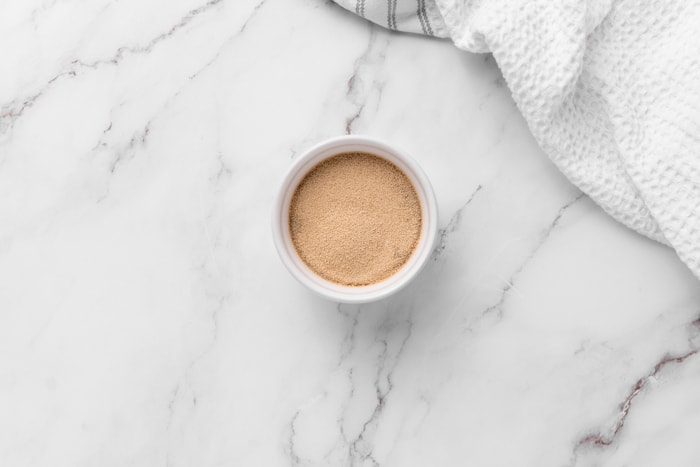
Now also add the yeast and mix it in.
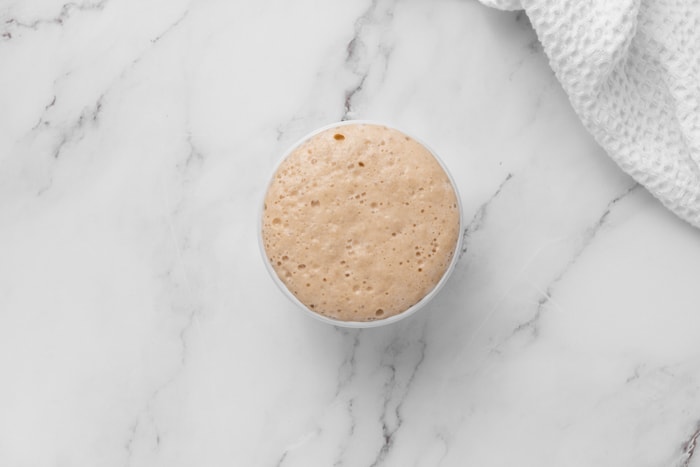
Let the yeast mixture sit for 5-10 minutes (this is important!) until it starts bubbling and doubles in size.
If it doesn’t bubble and increase in size, either your yeast is expired or your water was too hot. In that case, you’ll have to start over with new yeast.
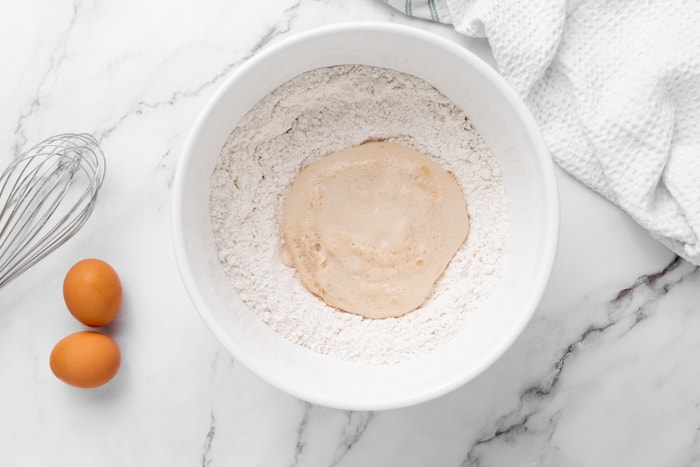
Next, add the all-purpose flour, sugar, yeast mixture and eggs to a large mixing bowl.
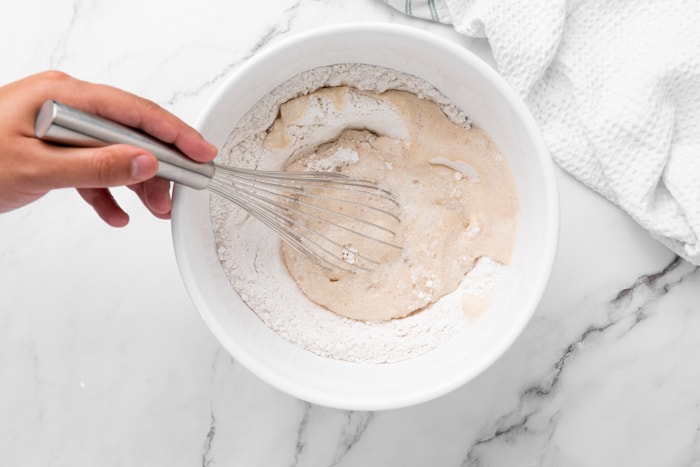
Mix everything with a whisk.
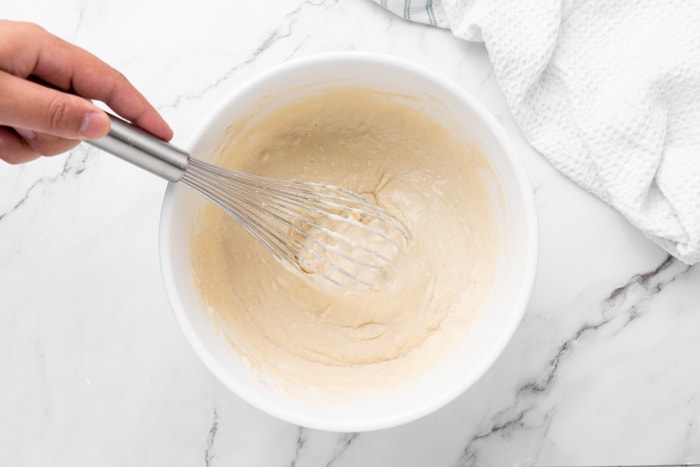
Next, add the warm milk in small increments and keep whisking until the dough is smooth.
The milk should have a temperature of 110 degrees Fahrenheit – if it is too hot, it might hurt the yeast.
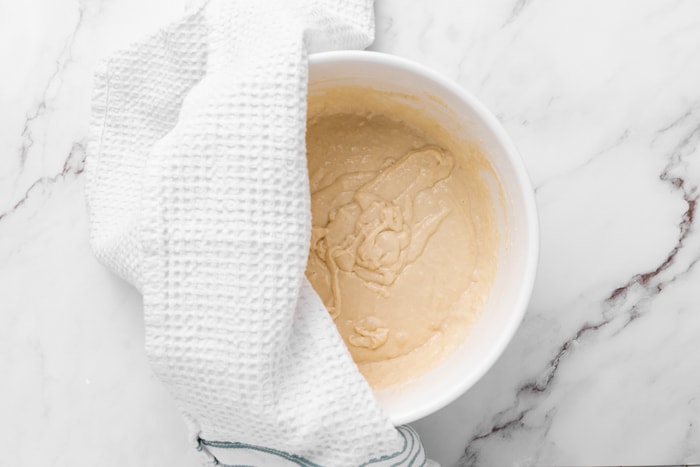
Now cover the bowl with a damp dish towel and let it rise for 2 hours.
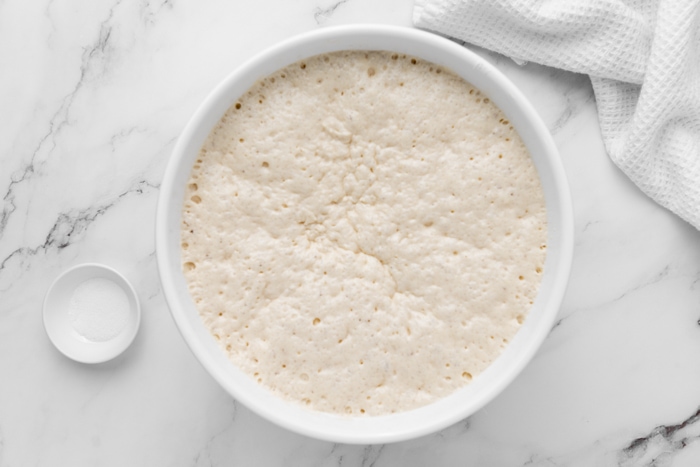
During these two hours the dough should noticeably increase in size.
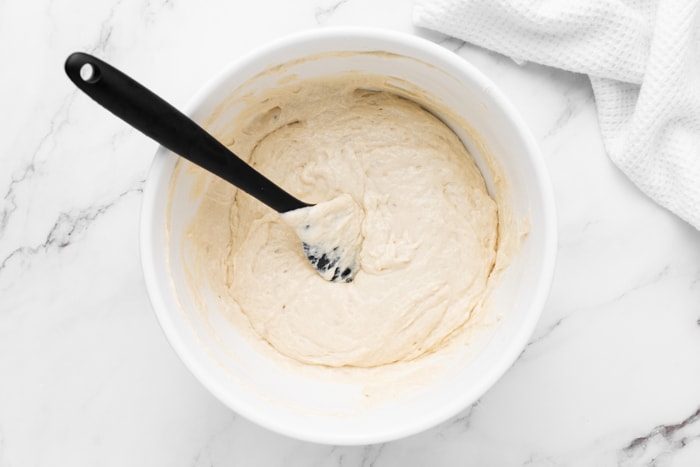
Now, add the salt to the dough and carefully mix it in with a spatula. We’re adding the salt now so that it wouldn’t interfere with the yeast.
Then cover the bowl once again with the damp towel and let it rest for another 2 hours.
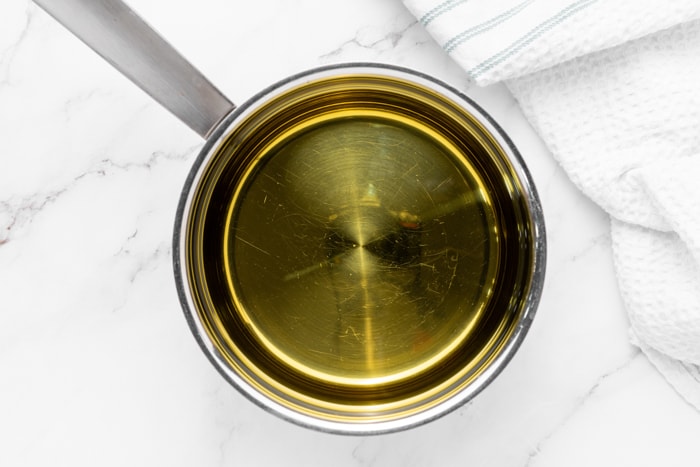
Towards the end of the resting period, heat your oil in a medium-sized pan.
Make sure it reaches a temperature of 350 degrees Fahrenheit first before adding any dough.
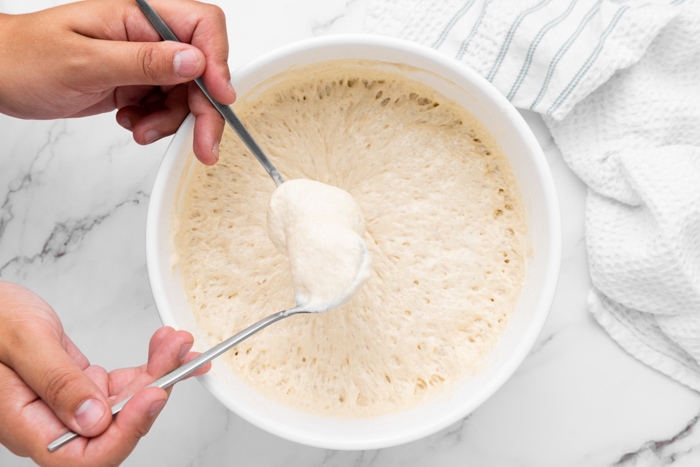
Dip two spoons in oil and form a small dough ball with the spoons, no larger than 2 tablespoons.
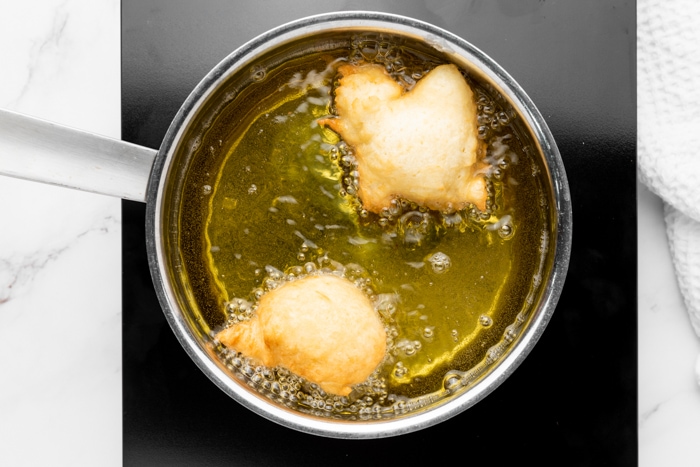
Now, let the dough ball drip into the hot oil. Do not overcrowd the pan and fry the oliebollen in small batches. I only fried them two at a time.
Fry the oliebollen for about 1-1.5 minutes on each side (2-3 minutes total), or until golden brown.
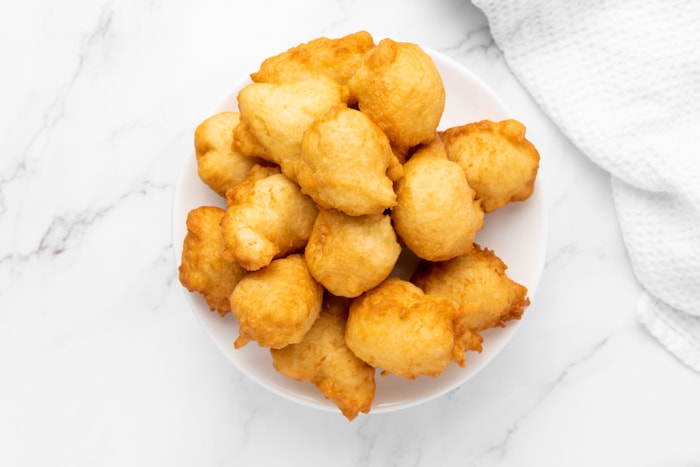
Then let them rest on a baking tray for a few minutes. Repeat until all oliebollen are fried.
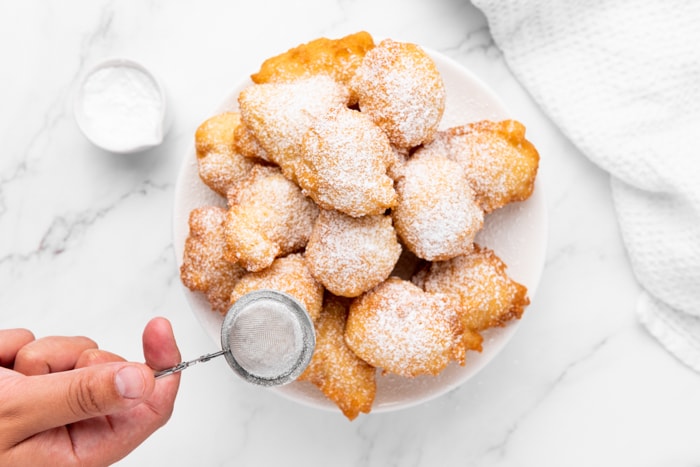
Sprinkle the warm oliebollen with powdered sugar (also known as confectioners’ sugar) and eat them while warm.
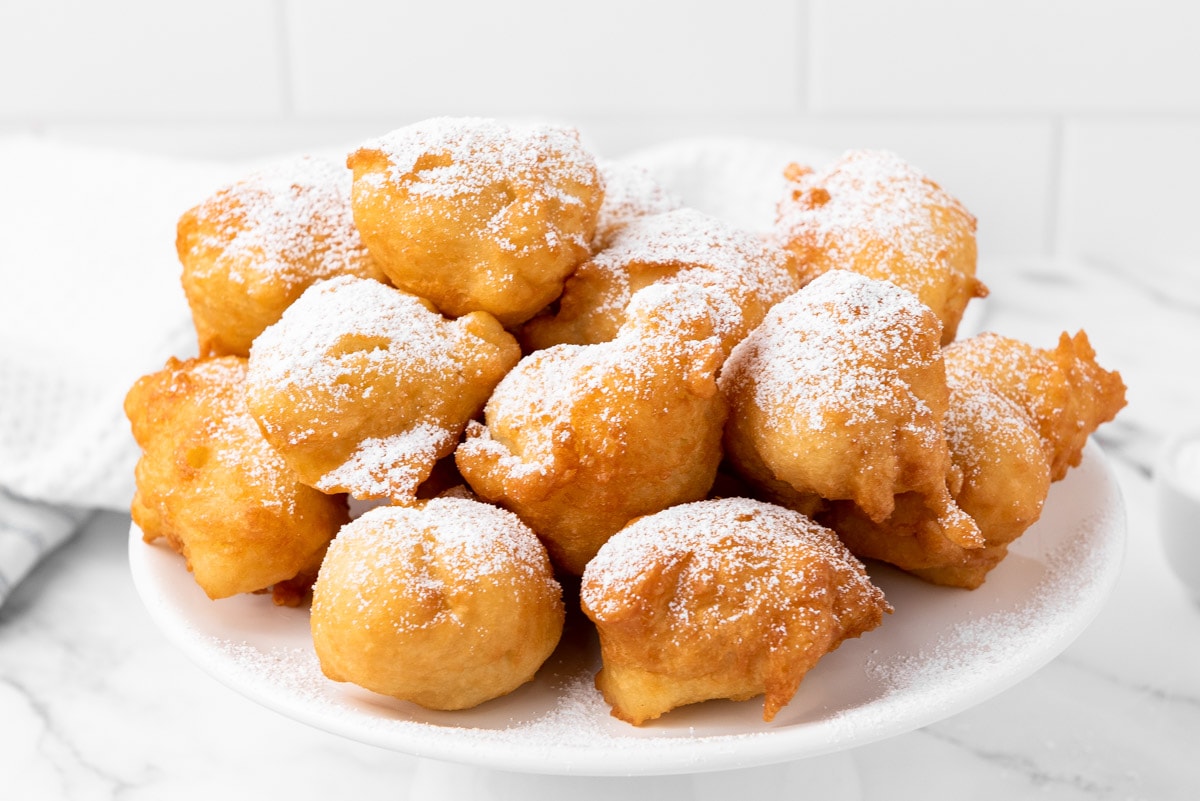
Storage Tips
If you’re wondering about how to store oliebollen, it can be a bit tricky.
Once you’ve made oliebollen, you’ll want to enjoy them hot and fresh. If you have any leftovers, keep them in a sealed container at room temperature for the best chance at freshness.
They will still be edible but definitely not as crispy – and over time the air (even when sealed) will make them stale.
FAQ
Oliebollen – literally oil balls – are a fried Dutch donut. Made from a yeast dough, oliebollen are classified as a fritter (a beignet), can be made plain or with raisins, sultanas, or candied citrus peel, and are enjoyed with powdered sugar around New Year’s.
There are a few connected ideas about how oliebollen came to be. Allegedly, Germanic tribes in Belgium and the Netherlands used to eat them while celebrating the pagan holiday of Yule (late December to early January). However, it may have been Portuguese Jewish immigrants who brought it to the Dutch/Belgian region.
Oliebollen are typically eaten around and during New Year’s Eve. Stalls only sell them during the month of December in the Netherlands and Belgium.
Related Recipes
If you liked these Dutch donuts, here are some other sweet treats that you might enjoy. We’ve got other fried donuts, dumplings, and other festive sweets that are also round!
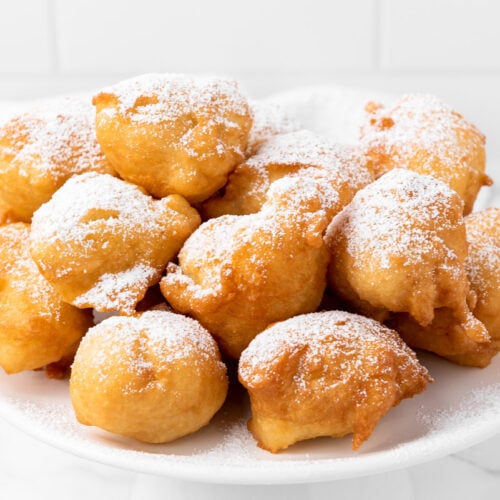
Oliebollen (Dutch Doughnuts)
Ingredients
- 1/2 cup water, warm (at 110 degrees Fahrenheit)
- 1/2 teaspoon granulated sugar
- 3 teaspoons instant yeast
- 4 cups all-purpose flour
- 2 cups milk, at 110 degrees Fahrenheit
- 2 eggs
- 1/4 cup granulated sugar
- 1 teaspoon salt
- 4 cups vegetable oil
- 1/4 cup powdered sugar
Instructions
- To a small bowl, add the warm water and mix with the sugar until the sugar has dissolved.1/2 cup water, 1/2 teaspoon granulated sugar
- Then add the yeast and mix it in. Let it sit for 5-10 minutes until it starts bubbling and doubling in size.3 teaspoons instant yeast
- Add the all-purpose flour, sugar, yeast mixture and eggs to a large mixing bowl. Mix with a whisk.4 cups all-purpose flour, 2 eggs, 1/4 cup granulated sugar
- Next, add the warm milk in small increments and keep whisking until the dough is smooth.2 cups milk
- Cover the bowl with a damp towel and let the dough rise for 2 hours.
- Add the salt to the dough and carefully mix it in with a spatula. Then cover the bowl with the damp towel again and let it rest for another 2 hours.1 teaspoon salt
- Heat your oil in a medium-sized pan. Make sure it reaches a temperature of 350 degrees Fahrenheit first before adding any dough.4 cups vegetable oil
- Dip two spoons in oil and form a small dough ball with the spoons, no larger than 2 tablespoons. Now, let the dough ball drip into the hot oil. Do not overcrowd the pan and fry the oliebollen in small batches. I only fried them two at a time.
- Fry the oliebollen for about 1-1.5 minutes on each side (2-3 minutes total), or until golden brown. Then let them rest on a baking tray for a few minutes. Repeat until all oliebollen are fried.
- Sprinkle the warm oliebollen with powdered sugar (also known as confectioners’ sugar) and eat while warm.1/4 cup powdered sugar
Notes
- If your yeast doesn’t bubble up and double in size, your yeast is expired.
- The dough is quite wet – this is normal.
- If you let your scooping spoons rest in a small bowl with oil, you have an easier time forming the dough balls and letting them slide in the oil.
- If the outside of the oliebollen is brown while the inside is not cooked, the oil was likely too hot. It should be 350 degrees Fahrenheit.
Nutrition
This nutritional information has been estimated by an online nutrition calculator. It should only be seen as a rough calculation and not a replacement for professional dietary advice.

Can you freeze the uncooked dough?
We haven’t tried this yet, but you should be able to. Just make sure you let the dough rise according to the recipe first. To make freezing and thawing easier, you can also shape the dough into small, evenly sized balls and then freeze them on a baking sheet until firm before transfering them to a freezer bag or container. Before frying the oliebollen, make sure to remove the dough from the freezer and let it thaw at room temperature for a few hours (or overnight in the fridge) until soft and fluffy. Please let us know how it works if you try it!
Yummy recipe and yeasts are fungi, not bacteria
Thanks Noni! And of course you’re right.
Hello, is it possible to let the dough rise overnight and make these for an event being held in the morning? Thanks so much!
Hi Elle, sorry for my late reply. Yes, you can let the dough rise overnight – just make sure to store it in the fridge to slow down the yeast activity. /Lisa
Hi Lisa, no worries at all! I really appreciate you responding; making the dough the night before will make everything so much easier. Thanks so much!
I want to add currants to these, how much should I add? Thank you so much for your help!!!
Hi Lynn, it’s really a matter of personal preference. I would probably go with something between 1/2 and 3/4 cup, but you can adjust that according to your preference. If you decide to add raisins as well, use a little less of the currants. /Lisa
Grandma always made Oliebollen for Christmas but I never got her recipe. I just made these for my family and they were fantastic! Thank you!
We’re so happy to hear that!
These are so delicious!